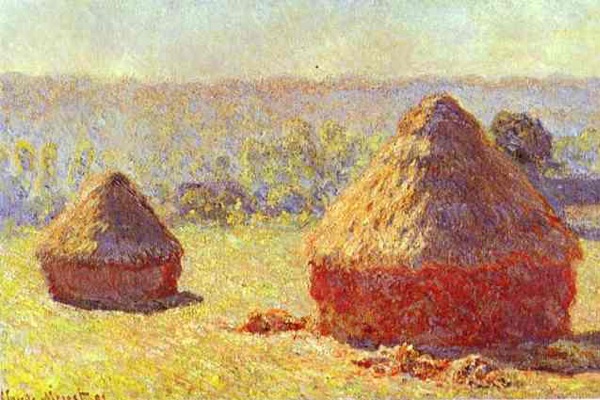
Creativity centers around the use of our imagination. It’s associated with freedom of thought and expression. At times creativity feels like it comes from a magical, almost undefinable space inside of us.
The challenge comes when you need to harness creativity for the purposes of your business and brand. When creativity needs to serve a specific purpose, expressing it can go from a liberating experience to a paralyzing one.
Whether you’re working on your brand’s visual design or messaging, there are so many variables to consider, from your vision, to your customers, to your positioning. To spark creative ideas that take all those elements into account, you need to apply constraints.
The question is what does that balance between structure and creativity look like?
To help answer this, let’s step back from the world of brand strategy for a second and see what we can learn from a space that embodies creativity: fine art.
Finding Beauty In Constraints

Claude Monet is one of the most famous and influential painters in history.
Coming up in the mid-to-late 1800’s Monet helped define the style of impressionism. During that time, he created several series of paintings. One of the most notable focused on fields of wheatstacks.
In 1890, from his home in northern France he spent about 8 months creating 25 variations of this one view.
All the pieces used his newly developed impressionist style. The medium was always oil on canvas. And the subject was a singular scene near his home.
With that structure in place, Monet was able to focus all his creativity around a very small number of variables — the transitions of light and seasons on the farm land.
When 15 of the pieces were exhibited in 1891 every single one sold within days and were met with acclaim.
Today, these beautiful yet constrained paintings are on display in museums from Paris to Tokyo, New York, and Los Angeles.
In May of 2019, one of the paintings in the series sold for $110.7 million.
So, what can we learn from his approach?
Someone of Monet’s technical ability could have painted anything. He could have used any style and focused on any subject.
But some of the greatest work of his career came when he imposed structure.
Rather than exploring lots of possible options, he chose to focus.
And with that focus, he was able to explore a singular idea with incredible depth.
In other words, he used constraints to elevate his creativity.
Constraints Are The Guardrails For Your Brand

(Photo via Joe Gardner on Unsplash)
Your brand isn’t an oil painting but the benefit of applying structure and constraints is just as important and powerful.
Take a brand’s core messaging for example.
When creating a statement aimed at summing up the value proposition of a brand, there are lots of variables at play:
- Positioning
- Tone
- Emotion
- Functionality
- Readability
- Length
- And for digital needs, SEO
No matter how experienced you are in strategy, branding, marketing, or copywriting, you can’t juggle all those elements in your head and expect to just “come up with something” worthwhile. At best you can throw a lot of darts
That’s why we need process and constraints.
Rather than relying on your imagination to magically take those elements into account, you actively define them.
You document and share the fundamental elements that define your brand’s strategy:
- Vision and values
- Customer motivations and outcomes
- Competitive differences
- Offering benefits and strengths
- Attributes and personality
- Tone of voice
When that information is clear it creates the focus needed to write effective messaging.
It means you have guardrails to fuel creative execution.
It also means that as you iterate and develop new messaging variations, you can have constructive discussions about the process. If you think an idea doesn’t work, you can articulate why. You can point to areas of misalignment with the strategy rather than relying on gut reactions.
And the same goes for any other creative element of your brand — visual design, imagery, icons, logo, colors. These things shouldn’t come from the whims of a designer. They should always tie back to strategic decisions.
Create Your Constraints
When you document your brand strategy, it’s an opportunity to define the guardrails needed to express your brand clearly and consistently.
Your strategy isn’t meant to be prescriptive of course. It doesn’t tell you exactly what to say or do in every situation. But it provides structure to make sense of all the elements within it.
And while processes and constraints might sound like they would restrict your creativity, the reality is they provide the focus that makes all your creative energy more effective.
Or as another fairly well known artist once said:
“Art lives from constraints and dies from freedom.” — Leonardo da Vinci
If constraints were good enough for da Vinci, they’re probably a good thing for your brand too.

Get Help Defining Your Brand’s Guardrails
If you’re ready to elevate your brand with a well-defined strategy, reach out for a free consultation. We’ll help you transform your best business thinking into an actionable, shareable, growth-oriented guide. Click below to learn more about the Brand Guidebook process.

